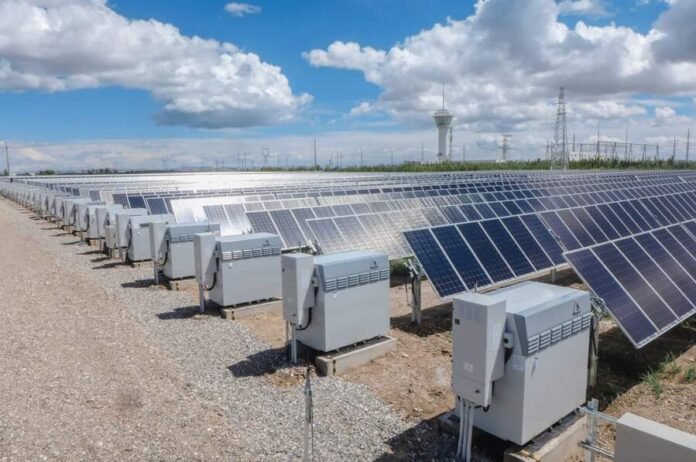Solar power is the savior that can shield the world from global warming. Plus, no better energy source can bring down the mounting electricity bills. So, if you plan to install solar for home, you are headed in the right direction – toward a sustainable future.
The most common solar system for home is an on-grid solar system. However, batteries are not used in this system. So, what’s the way to store energy when production is higher than real-time consumption? Well, that’s the beauty of an on-grid solar system for home – your grid works as a battery. We will explain the meaning a little later in this guide.
If you’re looking for solar energy storage options, read this article. It will be an insightful guide that’ll reveal your most suitable options. Dive in.
What are the best solar energy storage options?
Solar panels produce electricity between 9 AM to 4 PM. Out of this, 11 AM to 2 PM are the peak power generation hours. When the production exceeds the consumption, there must be a way to store this power so that it’s not wasted and can be used later.
Let’s talk about those storage options now.
#1. Your electricity grid
is your battery when it’s an on-grid solar system. How does that work, you ask us? Well, here’s the explanation.
An on-grid solar system has a bi-directional meter that facilitates the exchange of electricity – between the grid and the solar system. So, during the day, when power generation is at its highest, the units that the system generates get transferred to the grid.
When night comes (or the power generation is less under cloud cover on some days), electricity is imported from the grid. And this is how your grid works as a battery when you choose an on-grid system.
#2. Lead-acid batteries
Some people do like backups. And when installing solar for home, lead-acid batteries are the most popular option. Usually, a battery backup is preferred when the grid is unreliable, and power cuts are frequent.
When a battery is involved, the solar system is known as an off-grid or hybrid system. The former is not connected to the grid, and the latter is connected to the grid as well as the battery.
That being said, lead-acid batteries are also known as tall-tubular batteries. They get charged during the daytime and store extra power. When night comes, the house runs on solar energy stored in the batteries. The higher the battery’s capacity, the more the backup.
#3. Lithium-ion batteries
You must have heard about lithium batteries if you’ve been meaning to install solar for home. Lithium batteries are the best options to store solar energy, yet lead-acid batteries are more commonly used. The reason is that lithium-ion batteries are expensive. The break-even period in the case of solar for home increases.
How to store thermal solar power?
The three options mentioned above are more commonly used when silicon photovoltaic cells convert light from the sun to churn electricity. There is, however, another way to harness solar power: concentrators that produce solar energy using heat from the sun instead of light.
In this case, the main options to store solar energy are as follows:
- Solar water heating that is used to heat water tanks that use a heat exchanger to supply hot water for domestic use
- Solar pool heating that is used to heat a swimming pool
Moving on, let’s talk about the differences between lead-acid and lithium batteries.
Lead-acid or lithium batteries: Which is the better solar energy storage option when installing solar for home?
Installing solar for home is the right choice. But lead-acid batteries are more popular when it comes to storing the solar energy that’s generated.
Although lithium batteries have more advantages, lead-acid batteries are still more popular. The reason is that lithium batteries are 2.5 times the cost of lead-acid batteries. However, lithium batteries are the future.
Their price has been sharply reduced in the last decade with immense efforts. Lithium batteries are expected to replace lead-acid batteries shortly completely; maybe, 5 years from now.
Here’s a quick comparison table between the two:
| Lead-acid batteries | Lithium batteries |
| They release hydrogen gas when being recharged | They do not release hydrogen |
| They are a comparatively affordable option | They are 2.5 times more expensive |
| They are less durable and take more time to recharge | They last longer than lead-acid batteries |
Bonus section: benefits of solar for home
This is a bonus section for people still thinking about whether installing solar for home is worth the investment. The following benefits will change your perspective on solar energy forever. Dive in!
- The cost of electricity from fossil fuels is unbelievably high. In most Indian states, the electricity tariff per unit ranges between ₹8 to ₹10. And every year, the electricity rates increase by 3-5%. On the other hand, electricity from solar is free. The only investment is the cost of solar installation, which is recovered in 3 to 5 years. After that, you will get free electricity for more than two decades.
- The genie of pollution has been let out of its bottle, and it’s doing some heavy damage – greenhouse gases are melting glaciers, changing the climate that’s causing flash floods and landslides. When you install solar for home, you’re putting the genie back in its bottle. How? Solar systems do not emit greenhouse gases. Every 1 KW solar system is as good as planting 15 trees.
In short, if you install solar for home, you’ll save money as well as the planet. And there’s no better way of giving the future generation a good, sustainable life.
Conclusion:
Installing solar for home is no longer about fashion and trend – it’s necessary. And storing solar energy produced throughout the day is a practical issue that can be resolved in the many ways we have already mentioned in the sections above.
We hope that you know everything about storing solar energy and why choosing the solar way of living is necessary.






























































